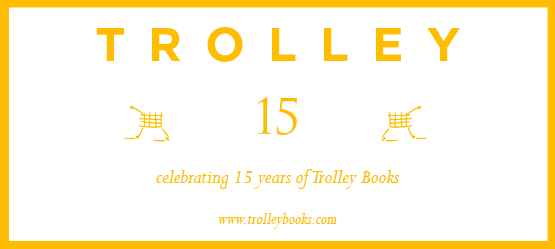- Massimiliana Spinola was working in the arts in London, when in 2005 due to the unexpected passing of her father she inherited the Castello di Tassarolo wine estate in Piedmont.
The Spinola family has been renowned for great wines for centuries — winemaking tools are represented in the coat of arms – and Massimiliana has vivid memories of wine making in the deep dark cellars of the castle when she was a child.
Arriving at the vineyard however to assess the situation she was horrified. The estate was run ‘conventionally’ – like most vineyards - with generous use of chemicals. Even the pebbles in the yard were toxic, endangering her six months old son. ‘When treatments were applied to the vines we had to stay locked in the house not to breathe in the toxins,’ Massimiliana says.
Direct contact with the spray would have harrowing effects. Her own father had found his face covered in blisters for a week after accidentally being sprayed. News from locals were despairing too. Poisoned farmers were abandoning their land for lack of options.
‘I met people who had sold their farms and because of falling sick; one said his father had been coughing blood when dismounting the tractor after spraying. I had to find an alternative…. ‘ and she did. When the slow food association declared her soil ‘dead’ she decided to fight back, and turned the estate organic and bio dynamic.
It takes 2-3 years to detoxify a vineyard or farmland. This is long when you set out to do so, but in truth shows how quickly nature can recover given the chance, and the results are remarkable. ‘I used to come from London to help, and it was custom to eat our grapes returning from harvest – but all of us would feel sick at the end of the day. We put it down to ‘stress’ and never thought more of it. Now we know it was the poison on and in the grapes. - An oenologist friend of mine recently was raced to hospital where he stayed for three days in intensive care after having eaten ‘conventional’ grapes while testing them.’
The last round of pesticides should be applied a minimum of 4 weeks prior to harvesting, but no-one checks and people don’t stick to the rules, neither in quantities nor in timelines. We think that’s why he got sick. The grapes are not washed before pressing and all toxins go into the wine. A recent test on a regular ‘conventional wine’ showed that it contained 4000 times the level of toxicity allowed in drinking water.‘
When a professor from the Slow Food University of Pollenzo declared her soil dead, the decision formed in Massimiliana’s mind: against all ‘conventions’ she was going to turn things around, organic, bio dynamic. Nine years on the results are phenomenal at Castello di Tassarolo. 2014 is promising to be a record year, two more 10,000 liter barrels are on order to be able to cope with the masses of grapes on the vines.
‘Initially no-one believed it could work. Failure was certain, people said I would never see a grape again. Cousins, local farmers… were more than sceptic, and kept coming to check if there was still a grape in sight. Now we have the results and people are starting to turn around. In Piedmont there are about 15 vineyards working organically today, it is a growing community.‘
‘Since 2007 we started to develop ‘no sulfite’ wines. It seemed too much of a travesty, when you produce pure natural wines, to finally top them off with sulfites for preservation purposes.
It took a few years and meant the losing of quite a number of bottles while experimenting, but with the enthusiasm of our oenologist Vincenzo Muni we finally got it right.
- Five of our eight types of wines are now without sulfites, and to the three we only add them because some markets are not ready for ‘no sulfites’ and people are sceptic.
But times are changing. People are more and more aware of the danger of chemicals in their food and drink. Some drive for hours to buy directly from us in search for purity, others are driven by allergic reactions to the toxins in ‘conventional’ wines. In the US wines labeled as ‘organic’ may not contain sulfites, if they do, the wines are labeled ’made with organic grapes.’ In the EU, organic wine may very well contain sulfites, unless it states otherwise.’
Henry Finzi-Constantine joined forces in 2009. ‘Henry had studied Rudolph Steiner for fifteen years and it felt right to pursue our mission together.’
Henry didn’t come with strong ideas alone. With him arrived the horses and ‘cavallavor.’ ‘I realized something was missing. A farm is only ‘whole’ with animals to complete the circle. Bio dynamic principles are all about life. Contemporary farming – even biodynamic, organic farming - views the soil from a two, three meter distance - the height of the tractor saddle.‘ explains Henry.
‘I brought in the working horse to work the soil directly, hooves and feet on the ground; while feeling the soil we avoid compaction, let air and water enter, let live below. There is no comparison between soil worked by a horse and that turned by heavy machinery. Tractors compact the soil 80% at first contact and then continue to damage. Horsetoiled soil remains buttery, friable, workable; we turn only the top few inches of livingsoil rather than cutting dead crust a meter deep.’
“Regarding circle and cycle… the animal provides the compost, our natural fertilizer which vitalizes our vines. Next we are looking to bring in cows, the true alchemists of nature.
- Regarding efficiency… horse power may be labour intensive but is rewarding and economically viable for estates up to a size of 70 hectares. The most successful model so far is a combination of horse power with a discreet use of machinery - a step towards fossil fuel independence and sustainability. Added value is the economic diversification horses bring in addition to the field work.“
“Regarding life… the horses bring their own with them. A new social life between them, us and others who come for training, therapy, riding or a day out in the country on a carriage, best enjoyed with a good bottle of - no sulfites added - Titouan Gavi.“
Castello di Tassarolo
Titouan in the vineyard - photo: Uscha Pohl, Tomek Sierek
">
Massimiliana and Henry Finzi-Constantine after a full days work with vines and our film crew - photo: Uscha Pohl, Tomek Sierek
">A bottle of - no sulfites - Gavi Titouan, named after the French Comtois horse - photo: Uscha Pohl, Tomek Sierek
">Horse harnesses and Piedmont Collars for the horses - photo: Uscha Pohl, Tomek Sierek
">The Castello Tasserolo Van of Genoa - the carriage for excursions and deliveries - photo: Uscha Pohl, Tomek Sierek
">Henry, Nicolas and Titouan, hoe-ing (Titouan pulling a hoe/interceppi) - photo: Uscha Pohl, Tomek Sierek
">The manure is is full of life and treated with great care - photo: Uscha Pohl, Tomek Sierek
">Henry explaining the dynamisation procedure - photo: Uscha Pohl, Tomek Sierek
">Vines in August - photo: Uscha Pohl, Tomek Sierek
">Titouan and Henry ready for dynamisation - photo: Uscha Pohl, Tomek Sierek
">Henry with Nicotine, Nicolas with Vadans in Novi Ligure - photo: Uscha Pohl, Tomek Sierek
">Nicolas Spinardi left his city life working in marketing to follow the call of the horses - photo: Uscha Pohl, Tomek Sierek
">Henry and Nicolas, Nicotine and Vadans delivering wine in Novi Ligure - photo: Uscha Pohl, Tomek Sierek
">Henry Finzi-Constantine, founder of cavallavor, reintroducing the working horse to agricultural/viticulture - photo:Pam Garzini
">Young vineyard, ploughed only with horses - photo: Uscha Pohl
">Cut vines - photo: Uscha Pohl
"> Massimiliana and Henry Finzi-Constantine after a full days work with vines and our film crew - photo: Uscha Pohl, Tomek Sierek
">Titouan in the vineyard - photo: Uscha Pohl, Tomek Sierek
">A bottle of - no sulfites - Gavi Titouan, named after the French Comtois horse - photo: Uscha Pohl, Tomek Sierek
">Horse harnesses and Piedmont Collars for the horses - photo: Uscha Pohl, Tomek Sierek
">
The Castello Tasserolo Van of Genoa - the carriage for excursions and deliveries - photo: Uscha Pohl, Tomek Sierek
">Henry, Nicolas and Titouan, hoe-ing (Titouan pulling a hoe/interceppi) - photo: Uscha Pohl, Tomek Sierek
">The manure is is full of life and treated with great care - photo: Uscha Pohl, Tomek Sierek
">Henry explaining the dynamisation procedure - photo: Uscha Pohl, Tomek Sierek
">
Vines in August - photo: Uscha Pohl, Tomek Sierek
">Titouan and Henry ready for dynamisation - photo: Uscha Pohl, Tomek Sierek
">Henry with Nicotine, Nicolas with Vadans in Novi Ligure - photo: Uscha Pohl, Tomek Sierek
">Nicolas Spinardi left his city life working in marketing to follow the call of the horses - photo: Uscha Pohl, Tomek Sierek
">
Henry and Nicolas, Nicotine and Vadans delivering wine in Novi Ligure - photo: Uscha Pohl, Tomek Sierek
">Henry Finzi-Constantine, founder of cavallavor, reintroducing the working horse to agricultural/viticulture - photo:Pam Garzini
">Young vineyard, ploughed only with horses - photo: Uscha Pohl
">Cut vines - photo: Uscha Pohl
">






















